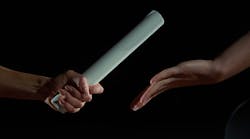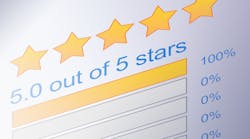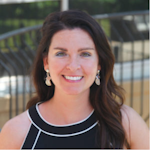“Everything looks good.”
These are the dreaded words that hygienists hate to hear a doctor say during the exam. The patient has just spent nearly an hour in the chair, listening to our words of wisdom on how to improve their home care, while we were in the depths of angry bleeding tissue. We’ve all been there—somehow, magically, the tissue gets better when the doctor comes in.
When the dentist says those words, we know they're talking about the teeth, not the tissue, but all the patient hears is “Everything looks good.” How do we tell a patient to come back for treatment after those three words?
We are all highly educated dental professionals with a universal goal of health. Why aren’t we on the same page when it comes to making a co-diagnosis? What happens when the hygienist and doctor aren't in agreement in front of the patient?
The disconnect can start when hygienists are newly hired or have been at an office for a while, and the most crucial piece of the puzzle is missing—communication. New staff are often pushed off the cliff and expected to hit the ground running. The expectation is that everyone is doing what they are trained to do and rarely does anyone ever check back in. Somehow, we lost the time to communicate, and sometimes there wasn’t communication to begin with.
The calibration meeting
Agreeing on a co-diagnosis starts with communication and confirming that everyone is on the same page. The easiest way to accomplish this is to have a calibration meeting with the doctor and hygienist, or for a multidoctor practice, a meeting including all hygienists and doctors.
What is a calibration meeting and how do we start one? First, reserve a specific time when everyone can meet. Meeting during a lunch break is usually not productive. Not everyone is on time, the meeting gets shortened, and it results in nothing getting accomplished. The goal of this meeting is to clinically ensure that everyone is probing correctly, accurately reading the probe the same way, and working together as a team. Again, we often think we are all doing the same thing.
There is great success, a new excitement to learn, and a relief that everyone is not perfect when teams come together and work on each other during this hands-on meeting. When doctors and hygienists are not in alignment, the day feels stressful, we can feel defeated, second-guess our skills, and over time stop completing the full assessment to even make the co-diagnosis.
The best way to have a successful calibration meeting is for everyone to work on each other and observe the techniques being used, without any judgment. A clinical team can’t expect to be on the same page if you don’t start off on one.
It is also important to remember that we can learn from each other. Each person went to a different school and was trained to complete the assessment is a slightly different way. The differences create new opportunities for us to learn and ask questions.
When dentists and hygienists agree, the patient ultimately has a better experience and will likely accept the needed treatment to get healthy. These meetings can help clinical teams become stronger and closer because trust and accountability have been established
A calibration meeting should be scheduled at least once per year and each time a new hygienist or dentist is hired. Probing techniques are only one type of calibration meeting—be creative and explore more ways to learn from each other.
The treatment planning meeting
Next, discuss the expectations of treatment planning and what each person views health and disease to be. The dentist may see disease as one thing, and the hygienist may see it as another. Is a 4 mm pocket enough to start SRP (active therapy)? The answer is yes and no. As hygienists, we can relate to this type of disagreement; it happens in almost every office.
What are the other factors that determine if more treatment is needed? Are both the dentist and hygienist reviewing the same data? Not agreeing on what level of disease should be treated can be the cause of distrust between the clinical staff. The good news is, this can easily be corrected with good communication and working on case studies together.
Discuss each person’s prospective and the reasoning behind the recommendations you would make. Select a few cases that are obvious and some that could cause a disagreement. Make certain to have all the necessary documentation to make the co-diagnosis such as radiographs, full periodontal charts, and intraoral photos. This discussion could also be done at the calibration meeting.
Passing the baton
After the calibration and treatment planning meetings, the dentist and hygienists should now be on the same page. The next step in making a co-diagnosis is transferring the information to one another. Visualize the patient as a track baton. When runners are passing the baton to the next person, great care is given to the handoff process. If the runner drops the baton the team can be disqualified. In dentistry, the baton (patient) is dropped when the patient doesn’t understand the treatment and leaves without making their next appointment.
A successful handoff of information starts with the hygienist guiding the doctor through the hygiene appointment. After the doctor greets the patient, he or she should ask the hygienist what the findings were before starting the exam. Include the patient in the conversation if patient-focused care is a priority. The best way to achieve this is to pass the baton (the patient’s information) in front of the patient. Not speaking about the patient behind the chair, not with a clinician sitting on the counter, and not sitting shoulder to shoulder. Think about a triangle; the hygienist, doctor and patient should ideally be arranged in a way that allows for everyone to see each other and be at the patient’s level. This can be difficult in some rooms, but it is worth it.
Once everyone is in the triangle, the hygienist has the spotlight and can now discuss the findings and give recommendations in front of the patient. This is critical—it is the time for the hygienist to let the doctor know that the patient has disease and what is recommended. This handoff process provides several important factors that allow for great patient communication. First, the patient is hearing the recommendations and is included in the conversation, and second, the doctor is aware that “everything does not look good.” Having this conversation before the doctor starts the evaluation will build a stronger relationship of trust with the doctor and hygienist while educating the patient in the process.
Once the evaluation is complete, the doctor and hygienist can agree on their co-diagnosis. The hygienist was able to “prewarm” or educate the patient, the discussion happens with the doctor and patient before the evaluation started and everyone is on the same page at the end of the appointment. As we all know, once the patient walks up the hallway of amnesia, they forget everything when they arrive at the desk, so it’s important to get their buy-in beforehand if possible.
“Everything looks great” can now be said when both the hygienist and doctor agree on the co-diagnosis together. Those three words can now be a positive part of the conversation for everyone.
One of my favorite quotes, by Luis Lunson, is “Instead of saying I don’t have time for that, try saying it’s not a priority and see how that feels.” Time is not a friend in a dental office, but if communication and agreeing on a co-diagnosis are important, then finding time is the best way to get on the same page and truly have great teamwork.
Editor's note: Originally posted in 2021 and updated October 2024.








